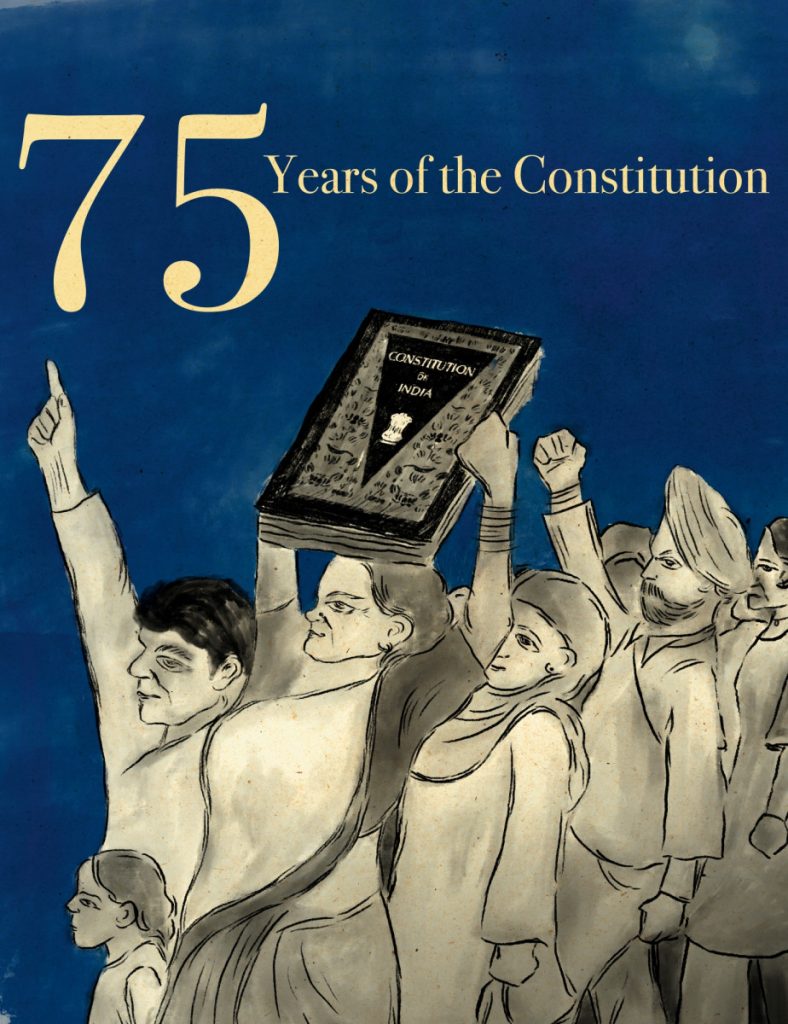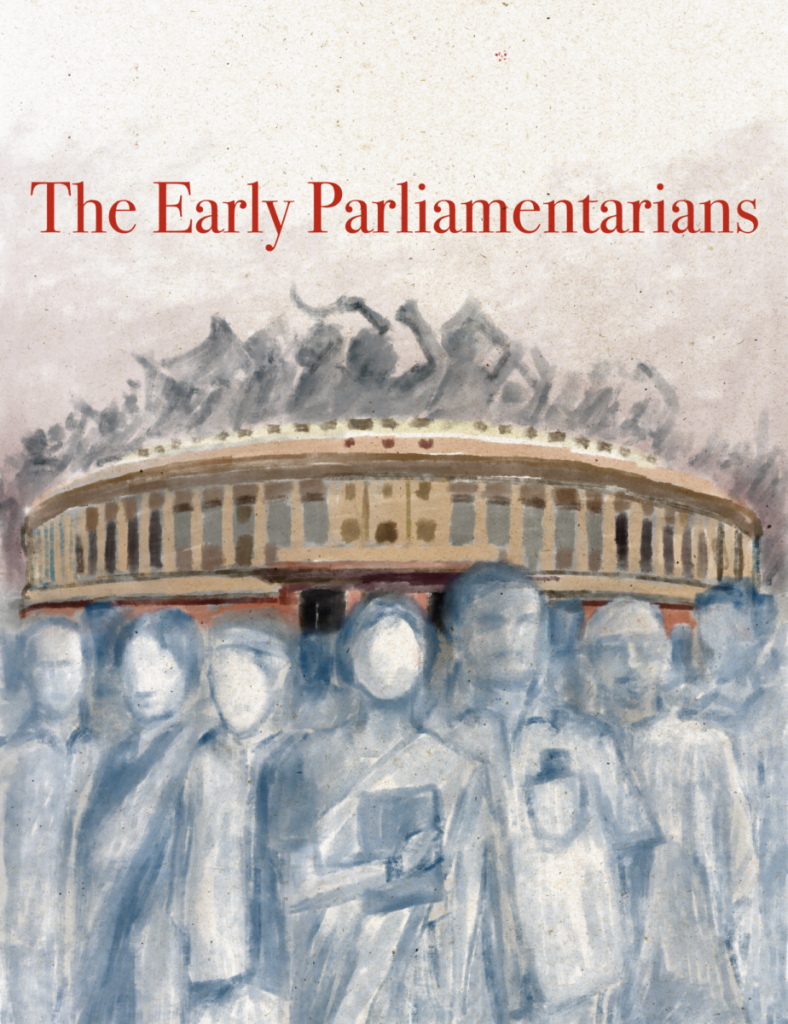S.A. Dange Was a Towering Figure – Not Just in India's Communist Movement But also in Parliament
This article is part of a series by The Wire titled ‘The Early Parliamentarians’, exploring the lives and work of post-independence MPs who have largely been forgotten. The series looks at the institutions they helped create, the enduring ideas they left behind and the contributions they made to nation building.
Shripad Amrit Dange, widely known as S.A. Dange, was a towering figure in India’s communist movement. A founding member of the Communist Party of India (CPI) and the All India Trade Union Congress (AITUC), Dange led the communist movement for nearly six decades. A dedicated freedom fighter, he spent 13 years in prison – both before and after Independence – during the prime of his life. A legendary figure, he was not only a political leader but also a respected parliamentarian.
Born on October 10, 1899, into a Deshastha Brahmin family in Karanjgaon village, Nashik district, Maharashtra, Dange grew up in a politically charged atmosphere. Revolutionary fervour in the region, particularly influenced by leaders like Lokmanya Tilak, shaped his early outlook. As Dange recalled, “Our conditioning in boyhood itself was national.”

Illustration: Pariplab Chakraborty
After his father’s death in 1920, he abandoned his studies to join Gandhi’s Non-Cooperation Movement. From then on, he remained deeply involved in the struggle for freedom. Dange was hardly 18 years old when the Bolshevik Revolution in Russia shook the entire world and laid the foundation of the socialist society. He was highly influenced by the socialist thought that human society can be created and sustained on the basis of equality and justice. And he was drawn to the career and achievements of the great Soviet leader, V.I. Lenin. At the same time he was inspired by the political philosophy of Karl Marx.
In 1921, he published Gandhi vs. Lenin, his first book, which articulated his ideological leanings. Lenin is said to have read the book and recognised “the sparks of the awakening Indian working class.” This marked Dange’s turn toward communism via nationalism.
In August 1922, he launched The Socialist, the country’s first communist journal, funded by selling his late father’s belongings. The journal advocated forming the Indian Socialist Party within the Congress, suggesting that Indian communists should work as a distinct group within the national movement.
British authorities, alarmed by the spread of socialism, arrested Dange on March 3, 1924, along with Ahmed, Gupta, and Usmani, in the Kanpur Bolshevik Conspiracy Case. He was sentenced to four years in prison for allegedly conspiring to overthrow the British government. This case marked the colonial regime’s first major crackdown on the Indian working class’s right to solidarity with international movements.
The architect of Indian communism
Dange, the high priest of Indian communism and the founder of the Communist Party of India, lit the torch of communism when uttering the word "communism" was considered to be a crime. He became a founding member of the Communist Party of India in 1925 under the chairmanship of Singaravelu Chettiar, alongside Muzaffar Ahmed, Ghulam Hussain, Nalini Gupta, and Shaukat Usmani. From those days till his last breath, Dange lived under the banner of communism which was the foundation of his thinking and his being.Dange’s lifelong commitment to communism was unwavering.

Illustration: Pariplab Chakraborty.
A striking feature of Dange's perception of the Indian road to communism was that the working class unity could not be achieved without Hindu-Muslim unity. In fact, his political baptism took place in the struggle for Hindu-Muslim unity and the unity of the working class. In a series of articles in The Socialist, he brought into sharp focus the fact that Hindu-Muslim unity should be regarded as the principal pillar on which the future Swaraj of India was going to be built. Dange was also closely and actively associated with the Goa Liberation Movement, the Samyukta Maharashtra Movement, the Adivasi Satyagraha in Nashik District and the 'Land to the Tiller' Movement in Uttar Pradesh.
Champion of the working class
After his release in 1927, Dange became active in Mumbai’s trade union movement, centred in the cotton-textile industry. Through the Marathi weekly Kranti, he raised political consciousness among workers, culminating in the historic general strike of 1928. Dange, along with leaders like S.V. Ghate and K.N. Joglekar led a six-month strike involving over 600,000 workers, protesting wage cuts and rationalisation.
On 20 March 1929, Dange and 30 other communists were arrested in the Meerut Conspiracy Case and charged with plotting to overthrow the British government. The trial lasted four years, ending in a 12-year sentence for Dange. When the case went on appeal to the high court, the judge was constrained to remark that the whole fabrication was a "fountain pen conspiracy" and there was no evidence of arms in what had been played up as a conspiracy to undermine the British government. The judge declared: "Perhaps the deeper gravity was the hold acquired over the Bombay workers illustrated by the 1928 strike and the revolutionary policy of the Girni Kamgar Union."
Dange the parliamentarian
Dange’s legislative journey began in 1946 when he was elected to the Mumbai assembly – the first communist to have this distinction. He fiercely defended workers’ rights, opposing the Anti-Strike Bill and advocating the strike as a legitimate tool for labor. He said: "the right to strike is the most powerful, potent and today the only weapon in the hands of the working class in order to get concessions from the employer, as also to get legislation enacted in his favour". In the legislative assembly, his talents as a legislator were widely admired.
Dange's stint in the parliament began in 1957 when he was elected to the second Lok Sabha from Mumbai. Despite being a first-timer, he used to actively participate in the proceedings. His initial speeches, true to his nature, were like those of a trade union leader. But the style of speeches and manner of participation in the parliamentary debates needed different skills and tactics.He brought trade union issues to the national stage. His speeches, though initially combative, evolved into skilled parliamentary interventions.
Dange promptly adopted new parliamentary techniques in giving voice to the aspirations of the working class and the peasantry on the floor of the House. His speeches on the imposition of President's rule in Kerala after dismissing the communist government, on Tibet and on the India-China border situation reflected the revolt against injustice with which he had started his career. His way of speaking was very lucid and vibrantly persuasive.
Dange and the Prime Minister Jawaharlal Nehru were on the opposite sides in the Lok Sabha with diametrically opposing views on major issues.He often clashed ideologically with Prime Minister Jawaharlal Nehru. The prime minister believed in the concept of a mixed economy, while Dange was a committed Marxist. He kept challenging the prime minister to move more and more towards the left and the prime minister kept advising Dange to be more and more understanding of the middle path. And yet there was in both, a mutual respect for each other's sincerity.
Dange returned to the Lok Sabha again in 1967. In his speeches, Dange urged the ruling party to reckon with the new political realities of the times and to work for strengthening the democratic institutions in the country. He used the parliamentary forum not only to raise the grievances of the toiling millions but also to reflect the voice of the mass movement. While upholding national unity and its cause, he laid stress on giving more autonomy to the states, adequate protection and avenues for the development of ethnic and religious cultures, arts, etc.
Literary pursuits and legacy
Though best known as an activist, Dange was a serious intellectual. He studied literature, politics, and economics, publishing numerous works in English and Marathi. Fluent in Sanskrit and well-versed in the Vedas, he could discuss Kalidasa, Tukaram, Kabir, Shakespeare, Faiz, and Makhdoom with equal ease.
In 1974, he received the Soviet Union’s highest civilian honour, the “Order of Lenin,” recognising his contributions to peace, democracy, and Indo-Soviet friendship.
At his 90th birthday celebrations, President R. Venkataraman said: “In honouring him, we are, in fact, honouring one of the most important attributes of the Indian renaissance – the creative mutuality between India’s liberation movement and India’s labour movement. Shri Dange personifies that mutuality.”
Dange was married to Ushatai, a widow who shared his political ideals.
S.A. Dange passed away on May 22, 1991, at the age of 91. Paying tribute, Venkataraman had said: “Dange was an intrepid freedom fighter and a champion of social justice. He will be remembered in the annals of modern Indian history as one of the pioneers of the trade union movement, whose name became synonymous with the aspirations of the working class and the underprivileged.”
Qurban Ali is a tri-lingual journalist who has covered some of modern India’s major political, social and economic developments. He has keenly followed India’s freedom struggle and is now documenting the history of the socialist movement in the country. He can be contacted at qurban100@gmail.com.
This article went live on May twenty-second, two thousand twenty five, at seven minutes past three in the afternoon.The Wire is now on WhatsApp. Follow our channel for sharp analysis and opinions on the latest developments.




